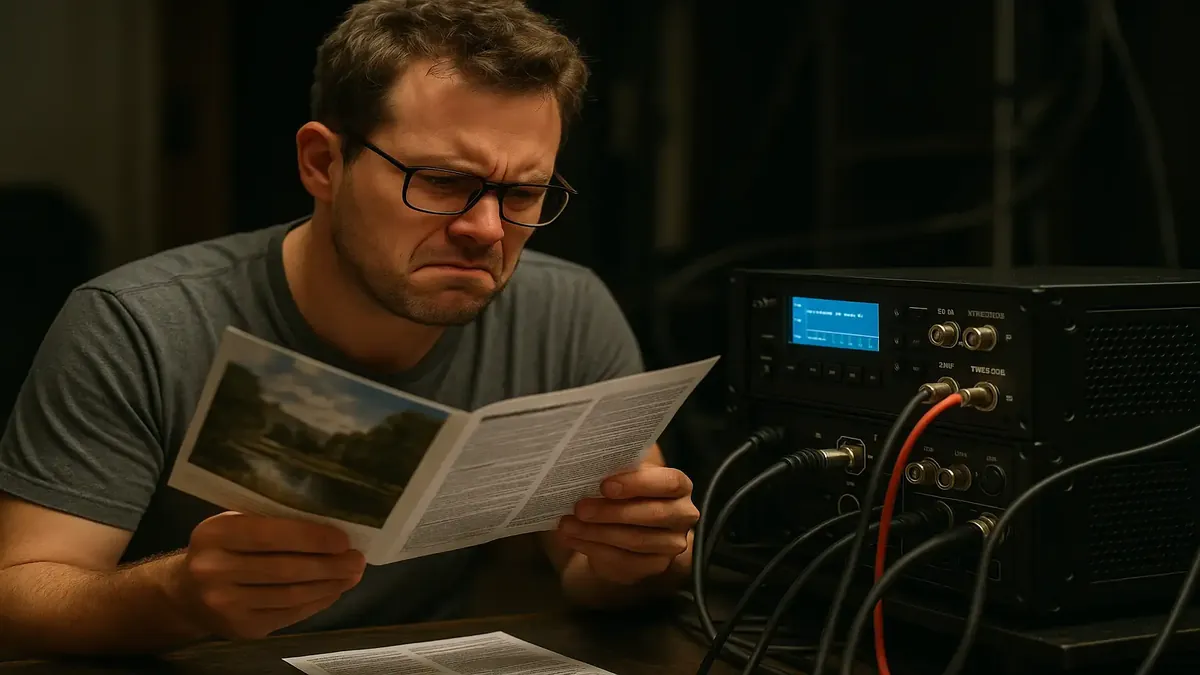When Manuals Lie: The AV Timecode Fiasco That Drove a Tech Mad

If you’ve ever found yourself staring at a blinking control panel, clutching a user manual that reads like a choose-your-own-nightmare, and wondering why tech never works as promised, you’re in good company. There are few places more chaotic than the backstage of a live AV production—except, perhaps, the mind of the engineer who designed your gear. Today, we dive into a tale of timecode gone rogue, looping lies, and why sometimes, the best troubleshooting tool is a healthy dose of skepticism.
It all started innocently enough: a seasoned tech prepping for a high-stakes event, confident in his gear (well, as confident as anyone can be in flaky AV hardware). What could possibly go wrong? Spoiler: Everything. This is a story from the trenches, where manuals are more fiction than fact, and “loop-through” means whatever the engineer decided that day.
The Two Pillars of AV Sanity: Sync and Timecode
For the uninitiated, commercial AV isn’t just about making things look pretty on a big screen. Two signals rule the roost—sync and timecode. Sync keeps every display, camera, and switcher dancing to the same tempo, so you don’t get that janky screen tearing or the infamous rolling bars of doom. Timecode, on the other hand, is the digital slate that tells your editing software exactly when each frame was captured, saving post-production editors from a life of guesswork (and carpal tunnel).
Lose either one, and your event quickly devolves into a tech support horror show. Our protagonist, however, found himself in a unique pickle: the timecode feeding his redundant recorder boxes started drifting. Not by a little. Not even by a consistent amount. Sometimes three frames, sometimes five, sometimes ten—a digital poltergeist wreaking havoc on the editors' sanity.
The Mystery of the Drifting Timecode
Let’s be clear: in the world of live event recording, timecode drift is a cardinal sin. The usual suspects—bad cables, missed terminations, flaky generators—were all cleared of suspicion. Oscilloscopes agreed: the signals were clean. So why, after 24 hours, did the backup recorder always slip out of sync?
It was the kind of problem that sends even the calmest techs into a coffee-fueled existential crisis. When all else fails, break out the high-shutter-speed photography and start comparing timecode displays. And there it was, plain as day: the two recorders were living in alternate timelines.
The Loop-Through Lie
Every AV tech knows that a “loop-through” should be a simple, physical connection—a wire, maybe an op-amp for good measure, passing the signal straight on down the line, even if the device in the middle bites the dust. Redundancy, people! But the real twist in this saga? The so-called loop-through wasn’t hardware at all. No, it was a software repeater—one that introduced unpredictable, random delays and died completely if the unit failed.
This wasn’t just a minor annoyance. It was a design sin of biblical proportions. Not only did the “loop-through” sabotage the timecode, but it also jeopardized the entire redundancy chain. If box #1 failed, box #2 was left in the digital wilderness, clutching a dead timecode wire and wondering where it all went wrong.
Tech Support vs. The Manual (And the Engineer)
The fix? Rip out the “loop-through” nonsense and wire both recorders directly to the timecode generator. Instantly, harmony restored. The lesson? Never trust the marketing brochure, the manual, or even the reassuring hum of a status LED. Trust only in your own cables, your oscilloscope, and a healthy skepticism of anything labeled “loop-through” designed after 1997.
Our hero was merciful. He didn’t track down the engineer responsible and introduce them to the business end of a halon suppression system. But you can bet he’ll never trust a manual—or a so-called redundant path—without popping the hood first.
Final Thoughts: Trust, But Verify (Then Panic-Proof Your Setup)
If you work in AV, IT, or any field where “redundancy” is a sacred word, take this tale as a cautionary fable. The next time your gear promises a loop-through, grab your tools and check it yourself. Because when the manual lies, and the engineer doesn’t know his op-amps from his elbow, it’s you (and your editor) who’ll be left fixing the mess.
Ever had a “the manual lied to me” moment? Drop your own tech support horror stories in the comments—let’s commiserate and remind each other that, in the end, Murphy’s Law always has the last laugh.
Read the original tale on Reddit and share your own AV adventures!
Original Reddit Post: Don't trust the brochure. Or the manual. Or anything really.